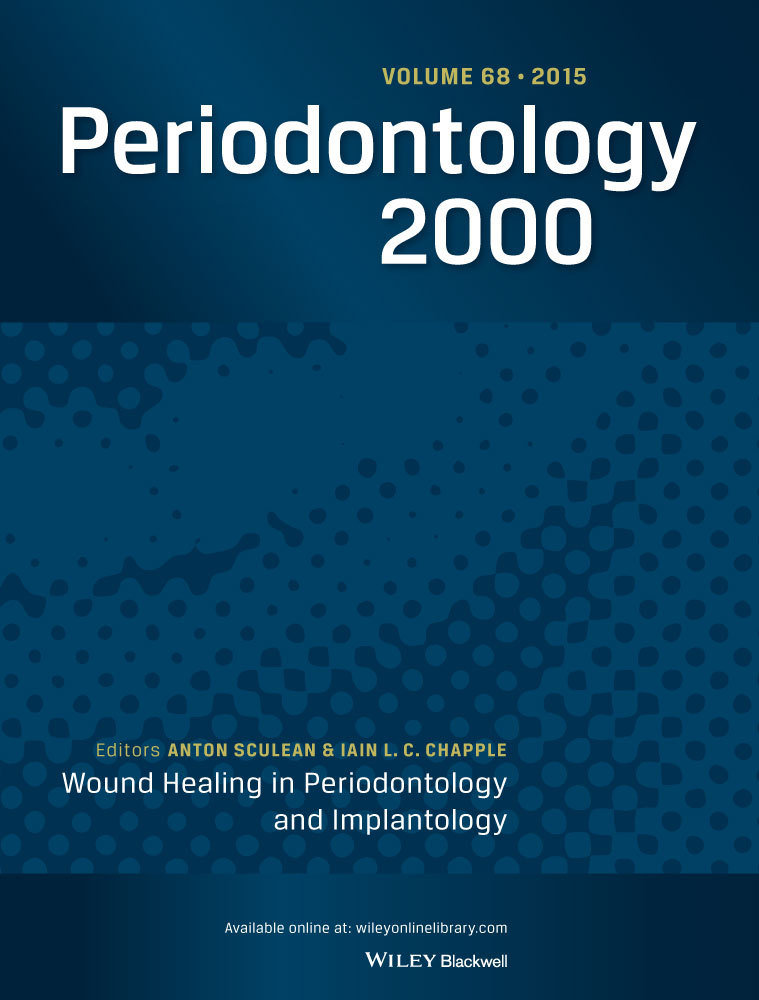Engineered surface strategies to manage dental implant-related infections.
IF 15.7
1区 医学
Q1 DENTISTRY, ORAL SURGERY & MEDICINE
引用次数: 0
Abstract
When exposed to the oral environment, dental implants, like natural surfaces, become substrates for microbial adhesion and accumulation, often leading to implant-related infections-one of the main causes of implant failure. These failures impose significant costs on patients, clinicians, and healthcare systems. Despite extensive research, there is no consensus on the most effective protocol for managing peri-implantitis. Biomedical engineering has aimed to address this challenge by developing biocompatible implants with surface properties designed to enhance biological responses and reduce polymicrobial accumulation. Due to the complexity of interactions between implants and biological systems, no single material property can drive these processes. Instead, a combination of physical, chemical, and mechanical properties is required to ensure a safe and effective response. Antimicrobial coatings are developed either by incorporating antimicrobial agents onto surfaces or modifying the material's physicochemical properties. These coatings utilize a range of compounds for contact-killing or as drug-delivery systems. While biomaterials science has advanced rapidly in enhancing implant surfaces, these bioengineering techniques have progressed more rapidly than our understanding of the pathogenesis of implant infections. To bridge this gap, biomedical engineering must address emerging knowledge about implant infections, focusing on controlling microbial accumulation while simultaneously managing inflammatory responses to support tissue healing. This review critically evaluates current evidence on implant infection pathogenesis, antimicrobial coating technologies, and systematically assesses their in vivo (animal and human evidence) efficacy to guide future advancements in implant infection mitigation.处理种植体相关感染的工程表面策略。
当牙种植体暴露在口腔环境中时,像天然表面一样,成为微生物粘附和积聚的底物,经常导致种植体相关感染,这是种植体失败的主要原因之一。这些失败给患者、临床医生和医疗保健系统带来了巨大的成本。尽管进行了广泛的研究,但对于治疗种植体周围炎的最有效方案尚未达成共识。生物医学工程旨在通过开发具有表面特性的生物相容性植入物来解决这一挑战,这些植入物旨在增强生物反应并减少多微生物的积累。由于植入物和生物系统之间相互作用的复杂性,没有单一的材料特性可以驱动这些过程。相反,需要结合物理、化学和机械性能来确保安全有效的响应。抗菌涂层是通过将抗菌剂掺入表面或改变材料的物理化学性质来开发的。这些涂层利用一系列化合物进行接触杀伤或作为药物输送系统。虽然生物材料科学在增强种植体表面方面进展迅速,但这些生物工程技术的进展比我们对种植体感染发病机制的理解要快得多。为了弥补这一差距,生物医学工程必须解决关于植入物感染的新知识,重点是控制微生物积累,同时管理炎症反应以支持组织愈合。这篇综述批判性地评估了目前关于种植体感染发病机制、抗菌涂层技术的证据,并系统地评估了它们在体内(动物和人类证据)的有效性,以指导未来种植体感染缓解的进展。
本文章由计算机程序翻译,如有差异,请以英文原文为准。
求助全文
约1分钟内获得全文
求助全文
来源期刊

Periodontology 2000
医学-牙科与口腔外科
CiteScore
34.10
自引率
2.20%
发文量
62
审稿时长
>12 weeks
期刊介绍:
Periodontology 2000 is a series of monographs designed for periodontists and general practitioners interested in periodontics. The editorial board selects significant topics and distinguished scientists and clinicians for each monograph. Serving as a valuable supplement to existing periodontal journals, three monographs are published annually, contributing specialized insights to the field.
 求助内容:
求助内容: 应助结果提醒方式:
应助结果提醒方式:


